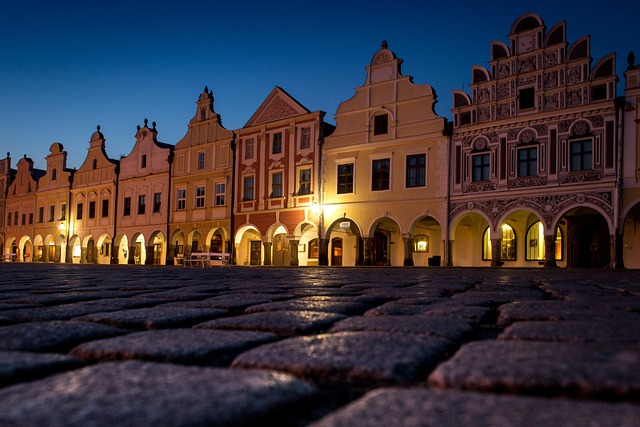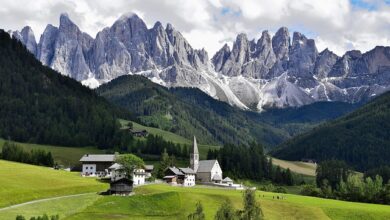The Best Tips for Sustainable Luxury Travel

Luxury travel doesn’t have to come at the expense of the environment or local communities. As travelers become more conscious of their impact, sustainable luxury travel has emerged as a way to enjoy high-end experiences while minimizing harm to the planet and supporting ethical practices. From eco-friendly accommodations to mindful itineraries, here are the best tips for planning a sustainable yet indulgent getaway.
1. Choose Eco-Friendly Luxury Accommodations
a. Stay at Certified Green Hotels
Look for hotels and resorts with certifications from reputable organizations like:
- LEED (Leadership in Energy and Environmental Design)
- Green Key Global
- EarthCheck
These properties prioritize energy efficiency, water conservation, waste reduction, and sustainable sourcing.
Example:
The Soneva Fushi Resort in the Maldives is renowned for its commitment to sustainability, featuring solar-powered villas and zero-waste initiatives.
b. Opt for Boutique Eco-Lodges
Eco-lodges blend luxury with environmental stewardship by integrating seamlessly into their natural surroundings. Many offer private villas, organic meals, and guided eco-tours.
Tip:
Research lodges that partner with local conservation projects, such as Explora Patagonia in Chile, which supports regional wildlife preservation efforts.
c. Support Locally Owned Properties
Staying at locally owned boutique hotels ensures your money benefits the community rather than multinational chains. These establishments often incorporate traditional craftsmanship and cultural heritage into their design.
2. Prioritize Low-Impact Transportation
a. Fly Responsibly
Air travel contributes significantly to carbon emissions, but you can reduce your footprint by:
- Booking direct flights (takeoffs and landings produce the most emissions).
- Offsetting your flight’s carbon impact through programs offered by airlines or third-party organizations like Gold Standard .
b. Use Electric or Hybrid Vehicles
For ground transportation, opt for electric cars, hybrid vehicles, or chauffeur services powered by renewable energy. Many luxury destinations now offer Tesla rentals or eco-conscious limousine services.
c. Explore Slow Travel Options
Consider trains, boats, or even hot air balloons for scenic journeys that minimize environmental harm. For instance, the Venice Simplon-Orient-Express offers opulent rail travel across Europe with minimal ecological disruption.
3. Dine Sustainably
a. Eat Local and Seasonal
Choose restaurants that source ingredients locally and seasonally. This reduces food miles and supports small-scale farmers and fishermen.
Example:
In Tuscany, dine at farm-to-table estates like Castello di Ama , where wine and cuisine highlight regional produce.
b. Avoid Overfished Seafood
Check seafood menus against guides like the Marine Stewardship Council (MSC) certification or the Seafood Watch App to ensure sustainable choices.
c. Reduce Food Waste
Order only what you can consume, and encourage chefs to use every part of an ingredient creatively. Some luxury properties, like Six Senses Resorts , implement zero-food-waste kitchens.
4. Engage in Meaningful Cultural Experiences
a. Respect Local Traditions
Immerse yourself in authentic cultural activities led by local experts, such as cooking classes, artisan workshops, or guided heritage tours. Ensure these experiences are respectful and mutually beneficial.
Tip:
Visit markets or cooperatives where artisans sell handmade goods directly, avoiding exploitative middlemen.
b. Avoid Overtourism
Steer clear of overcrowded landmarks and instead explore lesser-known gems. For example, swap Venice for nearby Treviso or Machu Picchu for Choquequirao.
c. Hire Local Guides
Local guides provide insider knowledge and ensure tourism revenue stays within the community. Look for certified guides who adhere to ethical standards.
5. Pack and Prepare Sustainably
a. Bring Reusable Items
Pack reusable water bottles, utensils, shopping bags, and toiletry containers to cut down on single-use plastics.
b. Use Eco-Friendly Toiletries
Many luxury brands now offer biodegradable, cruelty-free products. Consider packing items from companies like Lush or Ethique .
c. Dress Responsibly
Wear clothing made from sustainable materials like organic cotton, bamboo, or recycled fabrics. Brands like Patagonia and Stella McCartney cater to eco-conscious travelers.
6. Support Conservation Efforts
a. Visit Wildlife Sanctuaries Ethically
Choose sanctuaries and reserves that prioritize animal welfare over entertainment. Avoid attractions involving captive breeding or forced interactions.
Example:
Stay at Singita Grumeti in Tanzania, which combines luxury safaris with anti-poaching initiatives.
b. Participate in Eco-Voluntourism
Join volunteer programs that contribute to environmental restoration or community development. Projects might include coral reef planting, tree planting, or teaching English.
c. Donate Thoughtfully
Contribute to vetted charities working in the area you’re visiting. Platforms like Charity Navigator help identify trustworthy organizations.
7. Minimize Your Carbon Footprint
a. Offset Your Stay
Some luxury hotels calculate and offset guests’ carbon footprints automatically. If not, consider purchasing offsets independently.
b. Conserve Resources
Even in luxury settings, practice resource conservation by reusing towels, turning off lights, and limiting water usage.
c. Choose Renewable Energy-Powered Destinations
Seek out destinations powered by renewable energy sources, such as Iceland’s geothermal spas or Norway’s hydropower-driven fjord cruises.
8. Embrace Minimalist Itineraries
a. Focus on Quality Over Quantity
Instead of cramming multiple destinations into one trip, spend more time in fewer places. This reduces travel-related emissions and fosters deeper connections.
b. Book All-Inclusive Retreats
Luxury retreats that combine accommodation, dining, and activities in one location minimize unnecessary travel between sites.
Example:
The Four Seasons Resort Bora Bora offers overwater bungalows, snorkeling excursions, and spa treatments—all within a compact, eco-conscious property.
c. Plan Off-Peak Travel
Traveling during shoulder seasons reduces strain on popular destinations and allows you to enjoy quieter, more exclusive experiences.
9. Invest in Sustainable Souvenirs
a. Buy Handmade Goods
Purchase souvenirs crafted by local artisans using sustainable materials. Examples include woven baskets, pottery, or jewelry.
b. Avoid Mass-Produced Items
Steer clear of cheap, imported trinkets that contribute to pollution and exploitation.
c. Plant a Tree
Some destinations allow visitors to plant trees as a lasting legacy of their visit. Organizations like Tree-Nation facilitate global reforestation efforts.
10. Advocate for Sustainability
a. Share Your Values
Encourage others to adopt sustainable travel habits by sharing your experiences on social media or blogs.
b. Provide Feedback
After your trip, leave reviews praising businesses that excel in sustainability—or suggest improvements to those lagging behind.
c. Lead by Example
By prioritizing sustainability without compromising luxury, you inspire fellow travelers to do the same.




